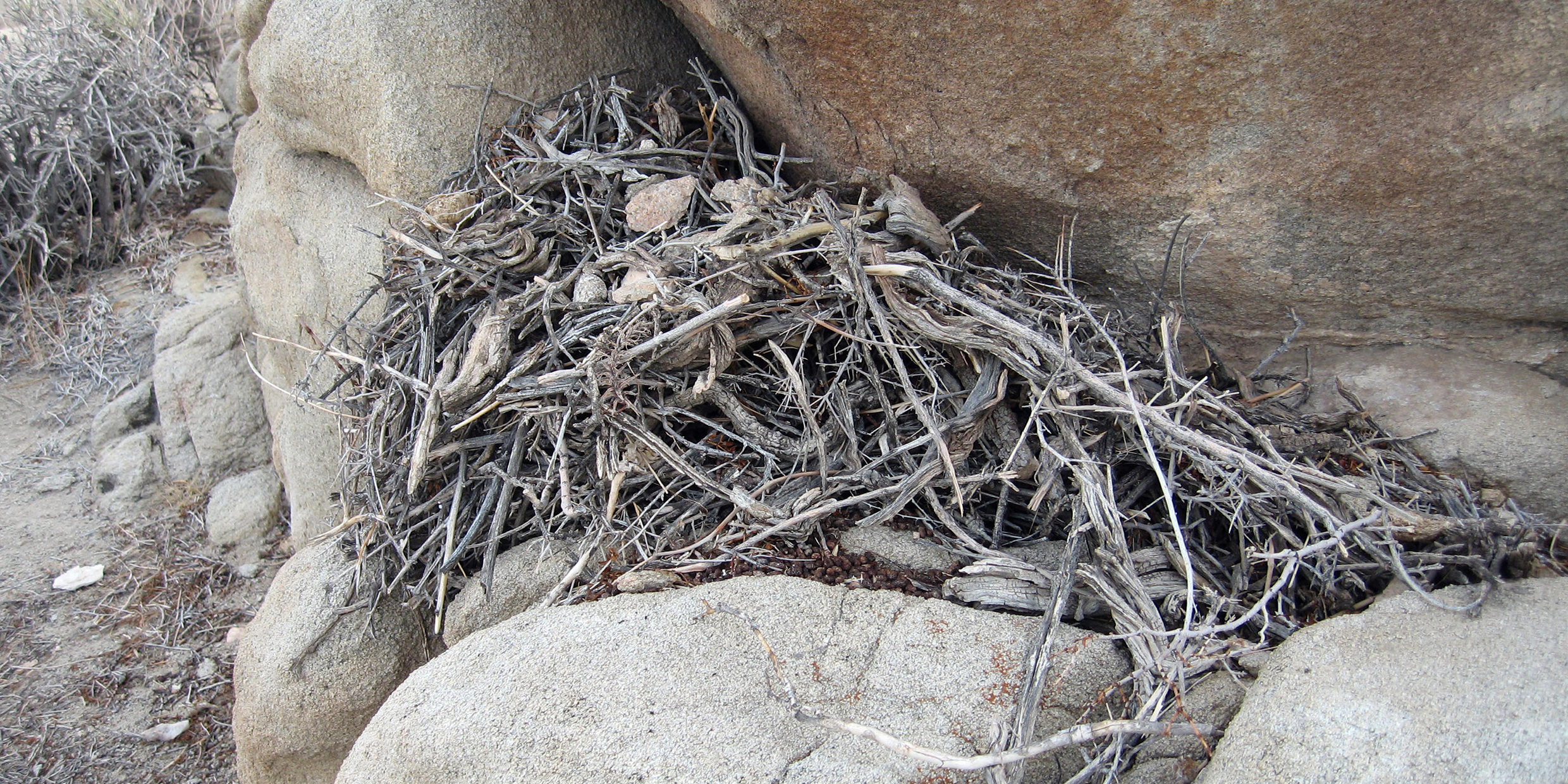Originally published 15 October 1990
Packrats pack. Paleontologists unpack. Out in the deserts of the American West paleontologists unpack packrats’ packs.
Let me unpack that tongue-twister.
Climate is on everyone’s mind’s these days. Hardly a day goes by that we don’t hear dire predictions of greenhouse warming, ice caps melting, sea levels rising, dust bowls forming. The truth is this: No one is quite sure whether we’re in for an abnormally warm future, more of the same, or another ice age.
But if the future is uncertain, past climates can be reconstructed with some modest degree of certainty. The past can be a crystal ball to the future.
Scientists who study past climates find clues in extraordinary places. Plant spores and pollen in deep bogs. Dust and air bubbles in the Greenland and Antarctic ice caps. Fossil plankton from sediments on the floor of the sea. Fossilized tree rings. Coral reefs. Anywhere, in fact, where something has accumulated with time and has endured relatively undisturbed.
That’s where packrats come in. Packrats accumulate. And because of a quirk of packrat behavior, packrat accumulations can endure for ages.
The packrats I’m talking about are cute little creatures, with big Mickey Mouse eyes and ears. They range from the Arctic Circle in Canada to Nicaragua. It is the packrats of the southwestern United States that have been of most interest to paleontologists.
Onto the scrap heap
Packrats collect food. They collect material to build their dens. They drag home sticks, cactus spines, plant fragments of all sorts, mammal bones, dung, insects, almost anything in fact that they can get their paws on. And the important thing is this: They collect more than what they use. What they don’t need they toss out the door.
Into a pile.
Outside every packrat den is a midden — a refuse dump, a garbage heap.
The packrat midden is a big pile of plant and animal parts collected from the neighborhood. Upon this pile the packrat is inclined to relieve itself. Crystallized packrat urine, called amberat, saturates the midden, encasing it in a tough amber-like sheath.
Urea, in packrat urine, has the chemical effect of mummifying plant fragments in the midden, much as packing them in salt would do.
Also, the amberat repels termites and beetles who might burrow into and otherwise disturb the midden. For all of these reasons, packrat middens can be wonderfully enduring. They can endure for thousands of years.
Enter, the paleontologist.
What is a packrat midden, after all, but a carefully collected museum-quality assortment of fossilized flora and fauna sorted by age and tidily preserved. The paleontologist need only drag middens home to have a record of changes in plant and animal communities extending over millennia — and, by inference, a record of climate change.
The definitive work on interpreting packrat middens has just been published by the University of Arizona Press: Packrat Middens: The Last 40,000 Years of Biotic Change. Yes, 40,000 years! Some packrat middens have lasted that long.
What we learn is that 40,000 years ago the climate in the American Southwest was very different than today. Deserts were less extensive. Forests of spruce, fir, and pine grew at lower elevations. Animals and insects had different ranges. All in response to the ice-age glaciation of northern North America. When the ice began melting about 15,000 years ago, plant and animal communities changed too. The changes are documented in packrat middens.
Eclectic mess
Ecologists who study present-day environments have the advantage of detail — every rat whisker and cactus seed can be observed in sharp focus — but they see only a snapshot in the unfolding saga of biological and climatic change. Paleontologists who study fossil flora and fauna see the entire movie, so to speak, but each frame is blurred by the passage of time. The further back in time the scientists probe the blurrier their fossil images become.
Packrat middens will be especially blurry if their makers were selective. But the packrats who live in American deserts today are reassuringly eclectic in what they collect, so there’s reason to believe that their ice-age ancestors also prepared representative samples of their environments. The fossilized middens are about as good a record of past habitats and climates as scientists could hope to find.
The lesson of the packrat middens is this: For a scientist, today’s trash heap can be tomorrow’s cache of treasure.



